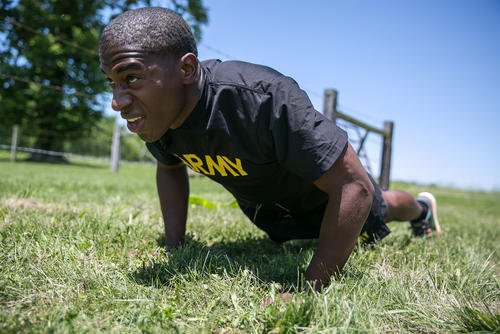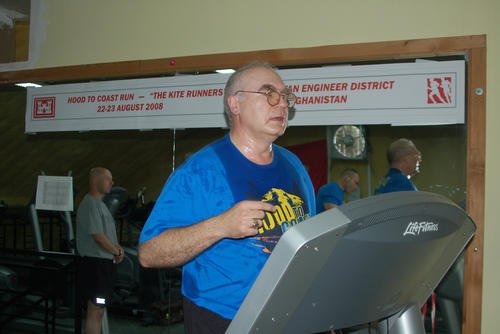Sitting is the new smoking. Well, not really -- but almost.
The invisible threat of prolonged sitting is quietly undermining your health and longevity. Not exercising, or being sedentary, can seriously affect neuron activity by diminishing blood flow to the brain. Research indicates that doing nothing will reduce blood flow and oxygen levels to the brain, negatively impacting cognitive performance and heightening the likelihood of diseases that affect memory and executive function, such as Alzheimer's disease and dementia.
Exercise is medicine. This is not just a clever saying by those of us in the fitness industry; basic exercise prevents many health risks, including neurological and aging diseases. According to a recent MIT study, exercise promotes not only muscle growth and endurance but also nerve growth. Just 30 minutes of daily muscle activity (exercise, manual labor) can increase neuron growth by 400%.
Read Next: Beginner Workouts for Passing Military Swimming Tests
Movement Is Necessary for our Brain and Body
Movement helps build a better functioning nervous system, allowing us to move, perceive, think and interact with our environment. It is crucial in everything we do, from basic reflexes and movements to the most difficult thinking processes. Exercise is a must. Studies have shown that physical activity can help offset the adverse effects of prolonged sitting on brain health, balance and stability, and cardiovascular and bone health. Not sitting all day can offset decreased blood flow, reduced oxygen to the brain and impaired cognitive skills.
Get Up and Move Every Hour on the Hour
Our mind and body both need a break from sitting too long. Even brief periods of walking or standing during the day can help maintain blood flow and oxygenation to the brain. The basics of walking and squatting (sitting/standing) for multiple repetitions every hour can help counteract the effects of being sedentary. These “exercise snacks” or breaks from sitting, such as doing 10 squats every 45-60 minutes spread throughout the day, have been proven to help regulate blood sugar after eating.
This study emphasizes the importance of minimizing sedentary time to improve the after-meal metabolism and reduce the risk of diabetes, which is often a precursor to Alzheimer's and dementia, frequently referred to as Type 3 diabetes.
MIT scientists' research indicates that muscles can communicate with neurons, and this interaction may promote nerve growth. As we age, this relationship is important in fighting the opposite effects of aging and sedentary lifestyles.
Don’t worry, you do not have to get into the gym and start lifting heavy weights. Simple body movements, such as stretching and contracting muscles, can stimulate neuron growth. For optimal results, even in your home, walk around and move your body’s joints throughout the range of motion to boost muscle growth, nerve growth and repair.
Why Neuron Growth and Repair Is Important
Our neurons are our cell communicators. They transmit electrical and chemical signals to facilitate communication between other cells. They are the building blocks of special circuits called synapses, which are responsible for our mental and physical activities.
To strengthen synapses, engage in regular mental and physical activities, get adequate sleep and adopt a healthy lifestyle. Specifically, focus on learning new things, solving puzzles and engaging in activities that challenge your mind and body.
One saying defines this process: “Use it or lose it.” We get good at what we do every day because of these neurons. However, if we do nothing, we get good at that, too.
More Moving, Less Sitting
Imagine a future when your daily routines enhance your productivity and your health. As we become more driven by technology, many adults spend more than 70% of their waking hours seated. This change in our lifestyles has serious consequences. The silver lining is that you can mitigate these risks by incorporating more standing and light movement throughout your day.
Here are some practical strategies:
- Schedule regular breaks: Set a timer to remind yourself to stand up and stretch every 30 minutes.
- Opt for a standing desk: Transition to a work environment that allows you to work upright.
- Walk and talk: You can take phone calls on your cellphone while walking so, if feasible, turn meetings into walking meetings.
- Walk more during your errands or commute: Park farther away or get off public transport a stop early to add walking to your day.
By making these changes, you will improve your health and enhance your energy levels and productivity. Take the first step today. Ready to reduce the risks associated with prolonged sitting? Navigate to the Military.com Fitness Section to equip yourself with ideas on how to move more and sit less. Learn how simple changes in your activity levels can significantly improve your physical and mental health. Your journey toward a healthier lifestyle starts here.
Want to Learn More About Military Life?
Whether you're thinking of joining the military, looking for fitness and basic training tips, or keeping up with military life and benefits, Military.com has you covered. Subscribe to Military.com to have military news, updates and resources delivered directly to your inbox.


















